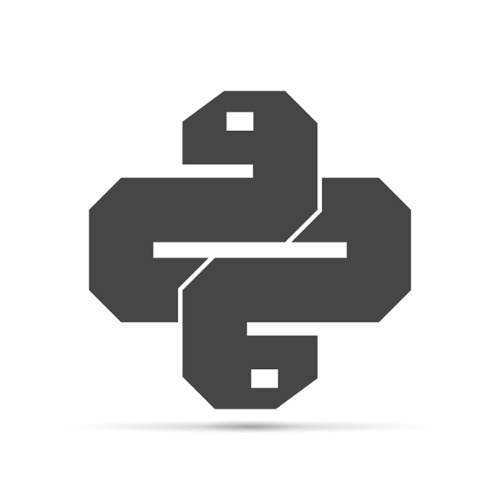 You have to be a little bit crazy to be a C-level IT leader.
You have to be a little bit crazy to be a C-level IT leader.
The CIO or CTO position is a thankless one at best. The only time you’re noticed is when things go wrong. And whether it’s infrastructure, security, or business systems, there are lots of things that can go wrong.
Thus, much of the CIO/CTO’s job involves identifying and mitigating risks—figuring out the myriad ways that things can go wrong and taking steps to prevent them. That’s on top of making sure that existing IT systems continue to support the business, getting companywide buy-in for new IT initiatives, and ensuring that new systems will do what they’re promised to do, and that they’re delivered on time and within budget.
No pressure, right?
Listen to the AndPlus Tech Podcast about this blog!
Risk and Software Initiatives
Perhaps no business initiatives carry more risk than software projects, especially custom, complex, far-reaching ones that touch many aspects of the business. These projects often fail. Study after study finds the same reasons for these failures:
- Arbitrary project schedules without reference to the project scope
- Lack of executive-level support
- Inappropriate staffing
- Scope creep (and failure to reassess the project schedule in response)
- Poor communication within the project team and between the team and stakeholders
- Unclear, incomplete, or un-testable requirements
- Building the wrong solution (i.e., automating a process the business shouldn’t be doing in the first place)
…and so on. You get the picture.
These risks can be mitigated by having the right team and good project management. IF you don’t have an in-house software development team, this means having a good software development partner.
Choosing a Development Partner: The AndPlus Advantage
Software projects are expensive undertakings, so it’s tempting to look at cost alone when shopping for a software development partner. Often this means looking at offshore development shops, whose hourly rates can be a fraction of what domestic shops demand. However, there are risks associated with offshoring:
- Language issues. Offshore developers and project managers may be fluent in English, but unless they’re familiar with American business idioms, they may completely miss the message, resulting in misinterpreted requirements.
- Subcontracting. You have no control over whether and to what extent an offshore firm subcontracts its work. Do you really want to risk spreading details of your business processes that far afield? Even if you have a non-disclosure agreement with all parties, how do you enforce it?
- Time zone issues. If the development team is on the other side of the world, real-time communications are difficult or impossible. You might get a one-day turnaround on an emailed question. If you’re lucky.
At AndPlus, we don’t offshore or subcontract. All of our developers, project managers, testers, and engineers are right here in our offices in Boston. We invite our clients to visit us and work with us face-to-face to ensure they get the right solution. And if you can’t visit, we’re just a phone call away.
Reducing Risk the AndPlus Way
Reducing risk isn’t just about keeping the work on-shore and in-house. At AndPlus, we’ve developed strategies that limit the technical risk of any software project. Here are some examples of project risk and the ways we address them:
- “Boiling the ocean”. Many software projects try to solve too many business problems at once. At AndPlus, we get the complexity message. To address it, we use the concept of minimum viable product (MVP) to limit the scope of the initial release of a software solution to those features that are absolutely essential. That gives you a solid base product to which other features and functionality can be added in later iterations.
- Unclear priorities. A related risk involves a lack of clarity around priorities. This is also addressed by the MVP approach. The high-level cycle is: Build, test, launch, learn. Here, “learning” means getting feedback from the end users. What you learn determines the priorities for the next cycle.
- Poor technology choices. One of the greatest risks in any software project is that of inappropriate technology choice. The technology choice (for example, web app vs. native mobile app vs. Windows desktop vs. progressive app) should be driven by the requirements of the solution and the environment in which it will be used, not because the lead developer knows only one technology well enough to implement it. At AndPlus, your project team includes multiple full-stack engineers who have different specialties, but who aren’t married to a particular technology choice. They will evaluate your situation and make the best choice—which may not be the latest gee-whiz technology.
- Poor communication and transparency. Let’s face it: The stereotypical software developer isn’t a great communicator. In traditional software projects, this means that problems often aren’t communicated to project managers or stakeholders until it’s too late, if at all. To address this risk, AndPlus has developed a software project management approach over the last decade that we call Agile Plus. Agile Plus has communication baked into the process, from daily stand-up meetings to management’s open-door policies to peer code reviews. In this environment, problems can’t hide—they are identified early and addressed immediately.
- Lack of team continuity. The AndPlus development approach is inherently iterative. And we understand that the key to success in an iterative development approach is team continuity. The same team that develops your MVP release will be there for the subsequent iterations. This saves you money in the long run—no billable hours are spent bringing a new team up to speed—and we can ensure your solution is properly modular and extensible, the code is peer-reviewed, and testing is done thoroughly with both manual and automatic testing tools.
- Poor maintainability. Traditional software projects operate on the assumption that the final deliverable is just that: final, immutable, unchangeable. At AndPlus, we know better: Business priorities change, companies expand, they acquire (or are acquired by) other companies, and technologies change. We anticipate these changes and architect your solution to accommodate them. Two years later, are you updating the OS on all your laptops? No problem. You now need a mobile version of the app? No problem. Need a new module to accommodate a recent acquisition? No problem.
Why AndPlus
Ultimately, you get what you pay for in software development. Choosing a development partner should be less about the hourly rate and more about what it buys you. With AndPlus, we understand that software is a long-term commitment and partnership, not a one-time deal. We want to help you succeed, by doing what we do best:
- Web applications - big data web dashboards, interactive data manipulation, and more
- Mobile apps - connecting hardware to software for on-the-go solutions
- Connecting things - IoT, touchscreen controls, Bluetooth applications, and other hardware integration
- Emerging tech - there isn’t a single technology we haven’t at least dipped our toe into
If you’re ready to minimize the risks of software initiatives, give us a call. The AndPlus approach is designed from the ground up to deliver solid, error-free software, the first time and every time, on the date we agree on, and within the defined budget.
The CEO still won’t notice you. And that’s the best part.

















